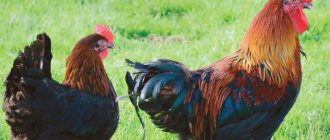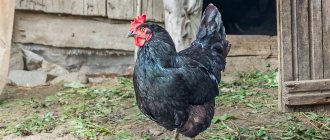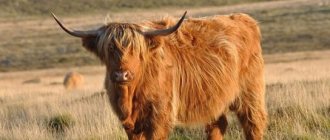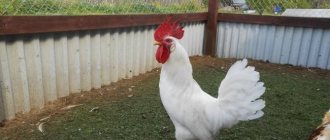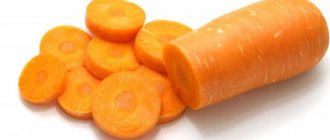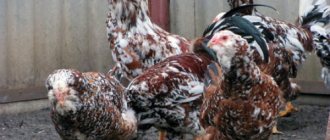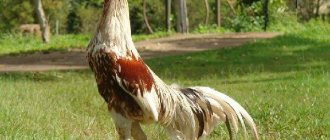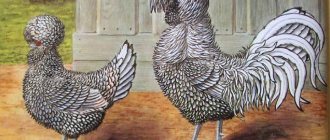- Australorp
- Black gate
- Tuzo
- Chinese silky (Bamboo chicken)
There is something about a black chicken that makes it stand out from all the others - it lays special eggs, and the broth from it is tastier. Dark plumage color is not uncommon. But not everyone knows that there are special breeds of black chickens. It's time to talk about what they are and why they are remarkable.
The maximum dark color of the bird (including the eyes, comb, tongue and even bones) gives it a special mystical beauty
Features of black chickens
Black hens are no less popular than white or red ones.
Feathers have a dark shade due to their high melanin content. Some birds also have black skin, muscle mass and bones. Representatives of the same species may be of different colors or differ in plumage mixed with some color.
All black chickens are raised for dietary meat, as well as broiler breeds, as well as eggs and fluff. Some of them are exotic, bred for beauty or to order for restaurants. Chickens are united by their unpretentiousness in keeping.
Frequent illnesses
Moscow black chickens are resistant to many diseases, but the breed has its own characteristics:
- Poor reaction to potatoes and corn in large quantities;
- Low immunity in the first 5 days of life.
If you follow the right diet and take good care of the newly hatched babies, then picky chickens will not bother the breeder.
General veterinarian recommendations:
- General cleaning of the chicken coop twice a year;
- The presence of an ash bath in the chicken room in which the birds can clean their feathers;
- Carrying out timely prevention of helminthic infestation.
Black Moscow chickens
The most common breed of laying hens was developed in 1980 based on the selection of brown Leghorn, New Hampshire and Yurlovsky breeds.
They are distinguished by black plumage with golden feathers on the neck of females, and copper plumage on the back of males. The body is elongated, the chest protrudes forward, large wings fit tightly to the body. The head is large with a large beak and orange eyes. The comb is small, erect, red, the same shade as the earrings and earlobes.
Productivity of Black Moscow chickens:
- meat yield when slaughtering chickens – 2.5-2.7 kg, roosters – 3.5-3.7 kg;
- egg production per year is up to 210 pieces, their weight can reach 60-75 g, the shell color is beige and brown.
Laying hens of this variety do not have a brooding instinct, so chicks are hatched using the incubator method. Dense plumage and resistance to temperature changes allow birds to withstand frost in an unheated chicken coop. Stress resistance, unpretentiousness and high survival rate allow chickens to be bred on an industrial scale.
Australorp chickens
The breed is so called because it was bred in Australia by crossing English breeds of chickens. Its appearance has characteristic features:
- the feathers are completely black, but in the sun they cast a green color, wide and rounded at the ends;
- the body is rounded, elongated at the tail, the chest is wide;
- the tail is wide, raised, the rooster has long braids;
- the comb is small, straight, with short teeth, red, the beard and earlobes have the same shade;
- the eyes are black and stand out brightly;
- legs of medium length, bluish-gray.
The period of maturity in laying hens begins at the 8th month of life; up to the age of 2, they produce 200-300 eggs every year. The weight of each rarely exceeds 50-55 g, the color of the shell is cream. Rooster carcasses can weigh up to 3.5 kg, chicken carcasses - up to 3 kg. Maternal instinct is developed at a high level; hens themselves identify infertile eggs, which they then throw out of the nest. Chicks have gray fur at birth, but this soon disappears.
Australorp chicken breed
Breeding in Russia
To achieve success in raising birds, they should be provided with suitable housing conditions.
Features of maintenance and care
First of all, it is recommended to think about the chickens’ diet. Thanks to a correct and balanced menu, it will be possible to achieve high-quality development, excellent productivity and good appearance of birds.
In this case, you should follow these rules:
- The main part of the diet should be dry food in the form of granules. Finely divided food is also suitable.
- After puberty, it is worth introducing combined mixtures. This is done after 20 weeks.
- Food should be present not only in feeders. It is recommended to scatter a certain amount of food to stimulate the locomotor activity of laying hens.
- When free-range, you should give preference to granulated food. This will help reduce the amount of contamination.
- Chickens should be given crushed boiled eggs, cottage cheese, and whey. Such supplements are used 2 times a week.
- As the chickens grow, crushed grains and greens are introduced into their diet. Birds also need combined feeds.
See also
Description and characteristics of chickens of the Master Gray breed, care and feedingRead
Adults should receive the following food:
- cereals;
- fresh vegetables;
- compound feed;
- greenery;
- protein products;
- fermented milk food;
- vitamins and minerals.
Fermented milk products should be introduced carefully to avoid upset of the digestive organs. It is important that this food is fresh.
For full development, birds require calcium. They get it in the form of chalk, shells or shells. These products are given to birds in crushed form.
The best option is three meals a day. In summer, birds have access to pasture. Therefore, it is permissible to feed them 2 times a day.
Providing comfortable living conditions is of no small importance. To do this, it is recommended to follow these rules:
- insulate the chicken coop for the winter;
- exclude exposure to wind or draft;
- maintain a suitable temperature - in winter it should not be less than +7 degrees;
- lay a layer of sawdust or straw on the floor;
- systematically clean the chicken coop and change the litter;
- provide the birds with plenty of space - there should be no more than 4 birds per 1 square meter;
- make a lot of nests;
- organize additional lighting in winter;
- make a yard for walking;
- ensure constant access to clean water and food.
Breeding rules
Black chickens were bred by selective breeding. Therefore, laying hens lack maternal instinct. It is recommended to breed birds in an incubator. To obtain black birds you will need special equipment. It must have temperature control and ventilation.
1 rooster is enough for 10 chickens. It is permissible to cross birds of different breeds. But it is worth considering that this will lead to a loss of decorative characteristics. Productivity parameters in this case are difficult to predict.
It is worth buying chicks of these breeds from specialized farms. Otherwise, there is a high probability of purchasing low-quality products.
Immediately after birth, chicks are very weak. Therefore, it is recommended to heat and clean the room all the time. To provide the chicks with vitamins, they should be given green onions. After 2 weeks, it is permissible to start short walks.
Black chickens are very popular among farmers. They are distinguished by high productivity and spectacular appearance. To achieve success in raising chickens, they should be provided with suitable living conditions. .
Armored chickens
There are two known subspecies of Pantsirevsky chickens - white and black, both were bred by crossing many meat-egg breeds from 1947 to 1961. Black laying hens and roosters have a well-proportioned, deep-chested build. The color of the feathers is black without inclusions, the legs and beak are dark. A small neat head with yellow eyes. The comb is small in females and large in males, with four teeth, erect, red.
The Black Pantsirevskaya breed has average productivity indicators:
- the meat yield when slaughtering chickens is 2.5-2.9 kg, roosters – 2.9-4 kg;
- Egg production in the first year does not exceed 220 pieces, but increases every year, reaching 270 pieces, each up to 65 g with a creamy shell.
Laying hens are able to hatch chicks on their own. The breed is valued for its high survival rate and unpretentiousness in food. Birds are able to easily tolerate stress and quickly acclimatize to new conditions.
Russian black bearded
The Russian Black Bearded breed, which appeared at the end of the twentieth century, is striking in appearance.
The plumage of laying hens is black, without impurities; roosters may have copper feathers on their backs. The body is massive, with a wide chest and lower back, a straight, slightly curved tail. The head is developed, the beak is short and thick, curved at the end. The beak and legs are approximately the same color - from black to dark gray.
The eyes are brown and stand out brightly on the red head. A small, rose-shaped ridge that tapers towards the end. The beard is arched, massive, ending in the middle of the neck. All skin elements on the head have a scarlet tint. There are large black earrings that frame the lower part of the head.
The body weight of roosters of this breed ranges from 3.5 to 4 kg, while that of chickens is slightly less - 2.7-3 kg. Egg production is average, 200-220 eggs per year. Each egg has a light brown shell and weighs up to 65 g.
Chickens are hatched using the incubator method from the largest eggs. Low temperatures are easily tolerated by representatives of this species. To maintain egg production at a good level, constant fortified nutrition is necessary.
Decorative breeds
Some breeds of black chickens are characterized by low meat and egg production.
More often they are bred as ornamental birds or for sale to amateur gourmets. Their distinctive feature is black skin and meat with a high carnosine content.
The most famous ornamental chickens:
- Chinese Silk chicken has feathers without fastenings between the fibers, so they resemble fluff and stick out in different directions. Especially fluffy are the small head, short tail and squat legs. The beak and metatarsals are black, the eyes are dark, the comb is small and pink. The weight of hens rarely reaches 1 kg, roosters grow up to 1.5 kg. The number of eggs per year does not exceed 100 pieces, each weighing up to 35 g.
- Ayam Tsemani were developed in Indonesia as a result of numerous crosses. They have black feathers, beak, legs, eyes, tongue, straight comb and entire body. They grow small, chickens - up to 1.5 kg, roosters - up to 2 kg. The eggs have a dark brown shell and weigh 50 g. Egg production does not exceed 100 eggs per year.
Chinese black chickens of the Wuheiliu breed on the farm of Nikolai Chuchkin
Tasting chicken of the Chinese breed Wuhei Yilu. Farm of Nikolai Chuchkin
Incredibly black hens, roosters, chicks
Maintenance and care
Little can be said about creating conditions for the living and well-being of a feathered flock, since this is the type of living creature that will do well in any conditions. But, traditionally, whooping whales are kept in poultry houses with high perches, spacious, dry and ventilated rooms. They are equipped with nests for comfortable laying, at least one for 5 workers.
The entire free area of the yard or a specially equipped and fenced courtyard may be suitable for walking so that birds do not harm green spaces - gardens, flower beds, vegetable gardens. Walking plays an important role in the productivity and health of the bird. Thanks to their frost resistance, feathered beauties can be sent out for walks even in winter and nothing will harm them.
Additional lighting is of particular importance in maintaining masonry in winter. The poultry farmer needs to ensure that daylight hours last at least 14 hours, then the Black Shumen breed of chickens will lay eggs all year round.
As for the heat in the poultry house, this is not the main parameter, since the Bulgarian hen is very resistant to low temperatures; if the temperature is within at least 5-10 degrees, it is guaranteed that it will be possible to use the egg-laying potential of the flock even in the cold season.
Molting and break in laying
Natural recovery mechanisms are also not alien to the Shumen chicken, and seasonal molting occurs immediately at a certain period of life, usually in the second year, closer to winter or in the fall. At the molting stage, nothing dangerous to the life and health of the family occurs. It’s just that the feather cover is gradually renewed, and in this active process of regeneration the quonka’s body is also completely restored, as a result of which after molting you can notice an increase in the clutch, which at this stage is suspended.
Planned herd replacement
From the moment of puberty until the last egg laid, about 5 years usually pass, but for more profitable poultry farming it is advisable to reduce this period to a maximum of 3 years. Already in the second year of activity, the number of eggs produced decreases, and so on with each subsequent year.
Frequent illnesses
Diseases, especially the most life-threatening ones that can quickly spread among chickens, do not affect black-tailed black-tailed black-billed black-tailed black-billed whales. Thanks to the fact that aboriginal Bulgarian hens took part in the selection, the Black Shumen breed of chickens received good genetic potential in terms of health and has innate resistance to a number of bacterial and viral infections.
The survival rate of adult livestock is about 98%, among young animals - 95% up to 6 weeks. This does not cancel vaccination and strict adherence to preventive measures, but increases the chances of profitable breeding of an active and productive herd without losses.
What are the reviews?
